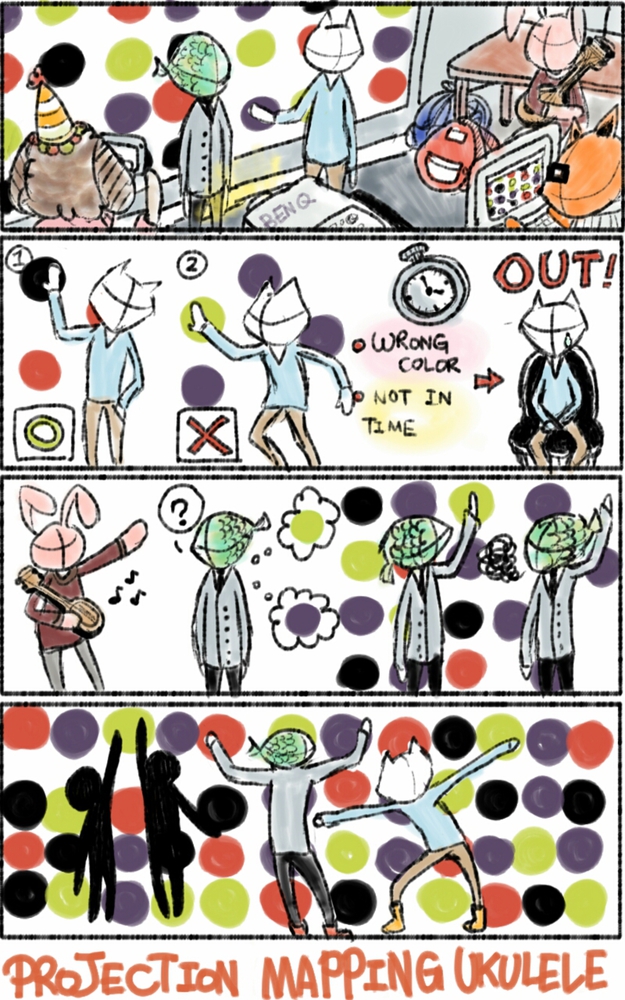Proposal:
For this project, we will project a grid of dots onto a wall. Using an ukulele to play different notes and patterns, we will determine the performer's movements. In particular, a specific note and pattern will signify to the performer's which colored dots to touch. We hope to take this concept and make it into a game that resembles twister, but on the wall.
ORIGINAL:
For this project, we’re going to incorporate interactivity into approximately 3 minute long performance. The performance will comprise of an ukulele performer, a singer, and background screen playing beautiful patterns corresponding to specific notes of ukulele and voice. The interactivity comes in two ways: when the screen interacts with playing notes, and when the singer and ukulele play together in harmony. We’ll be implementing the interaction with screen by connecting an electronic tuner to the ukulele and use an application to project the changes onto the screen.
What we need for specific implementations are: 1) We should find an application that could reflect the changes of notes from tuner onto the screen using visual patterns, 2) We should decide on a song to play and practice harmony, then 3) We should find a way to get a light to shine on top of the performers to emphasize them, and 4) We should find a couple of videos to play in the beginning and at the end of the performance for fading in and fading out purposes.
